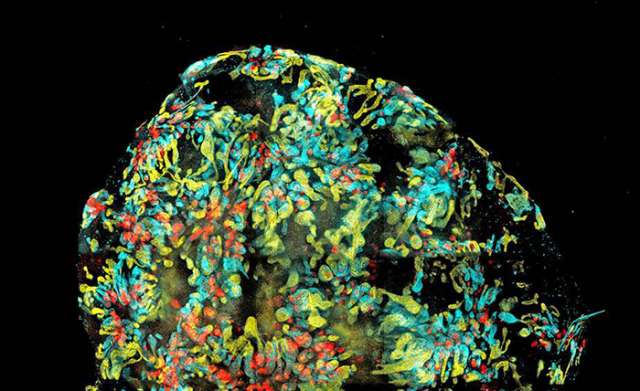The idea would be to grow organs in the lab that are close or perfect genetic matches for the patients who need them.
Melissa Little, Minoru Takasato and their colleagues at the Murdoch Childrens Research Institute in Parkville, Australia created what they call kidney organoids from a type of stem cell called an induced pluripotent stem cell, or iPS cell.
These are made using tissue from people. Normal, mature cells are tricked into regressing into a state that resembles the cells found in days-old embryos. This gives them the power to regenerate into any desired cell type.
In this case, the Australian team bathed the cells in chemicals aimed at making them form kidney tissue.
It worked, the team reported in the journal Nature. The cells formed various kidney tissue types and even began to organize themselves into a kidney-like structure.
In theory, some day a patient who needs a kidney transplant might donate a bit of skin, which a lab could grow into a genetically matched kidney. The patient wouldn`t need to take immune-suppressing drugs to make the body tolerate the new organ.
Another route would be for labs to grow organs using cells from people with various genetic makeups, offering closely matched off-the-shelf transplants.
But that`s still a long way off.
"It is vital to emphasize that the result of this process is not a kidney, but an organoid," stem cell expert Jamie Davies of the University of Edinburgh wrote in a commentary.
"The structure`s fine-scale tissue organization is realistic, but it does not adopt the macro-scale organization of a whole kidney. For example, it is not `plumbed` into a waste drain, and it lacks large-scale features that are crucial for kidney function," added Davies, whose lab is also trying to grow kidneys from stem cells.
"There is a long way to go until clinically useful transplantable kidneys can be engineered, but Takasato and colleagues` protocol is a valuable step in the right direction. Even so, these kidney organoids may fulfill a different medical need — the ability to test drug safety on human kidney tissue, rather than in poorly predictive animals."
In the second report, Dr. David Hackam of the Johns Hopkins Children`s Center and the University of Pittsburgh and colleagues used a different type of stem cells to grow rudimentary intestines, which they used to regenerate the linings of intestines in dogs.
They started with a different type of stem cell, taken from the colons of babies that had intestinal surgery and from mice. They cultured these cells with macrophages, a type of immune cell; and fibroblasts, the cells that make collagen and materials that hold tissues together.
They grew this mix on a tube-shaped scaffold made out of biodegradable material similar to that used in surgical sutures.
"Our experiments show that the architecture and function of our lab-made intestine strikingly resemble those of the healthy human gut, giving us real hope that our model could be used as the backbone for replacement intestine," Hackam said in a statement.
When they added bacteria found naturally in the gut, the cells grew even better, they said — producing infection-fighting tissue important for intestinal health.
When they implanted small stretches of this intestine-like tissue into dogs lacking the lining of the colon, it grew and healed, they report in the journal Regenerative Medicine.
Hackam`s lab focuses on treating babies for a devastating intestinal condition called necrotizing enterocolitis, which affects 25,000 babies a year in the United States. It`s a potentially deadly inflammatory condition that can kill premature babies.
More about:
















































